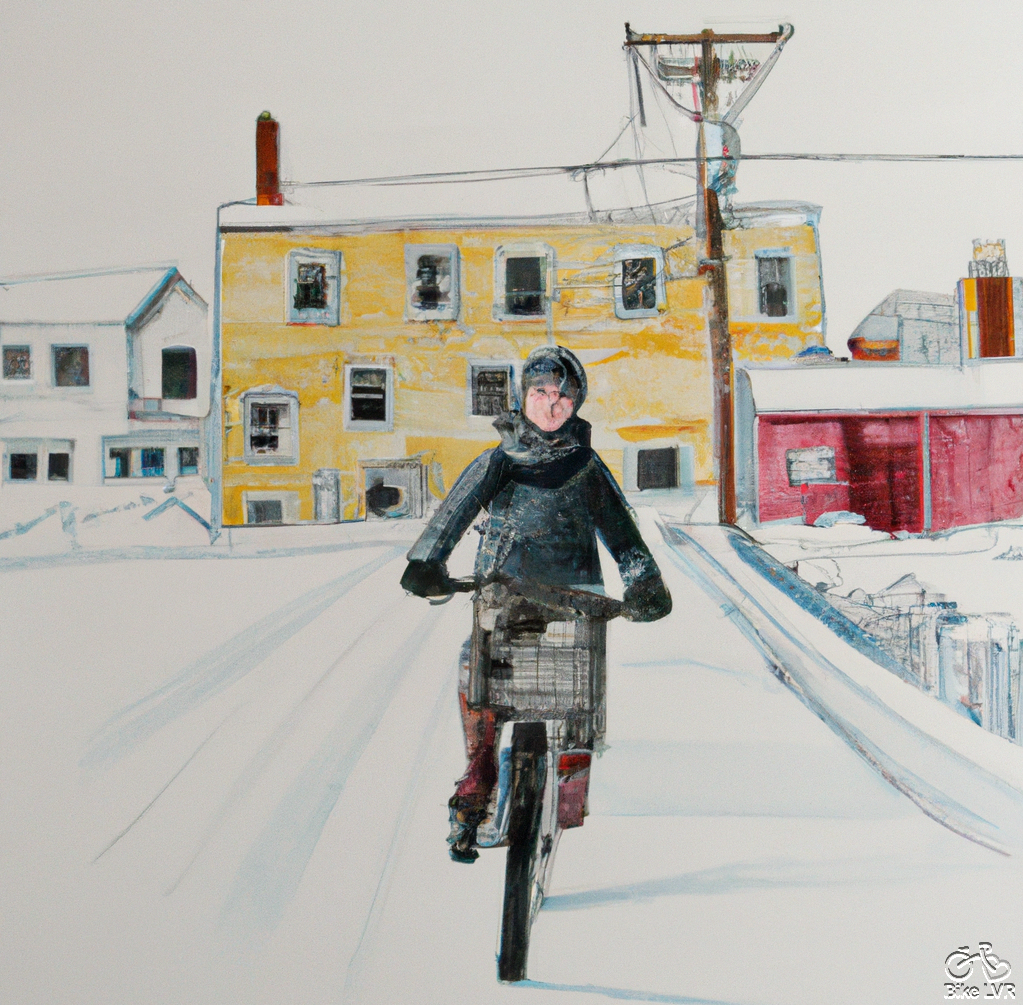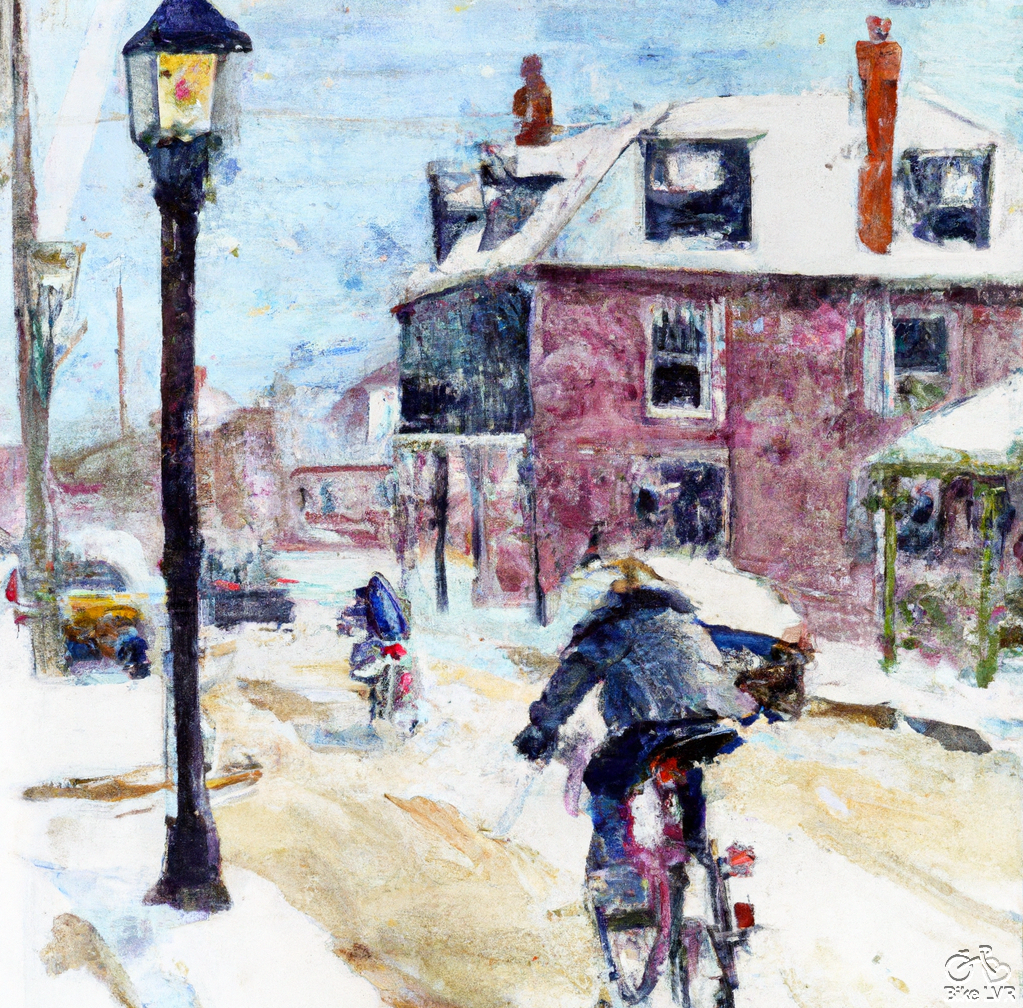
Make the most of our New England winter and take a ride! Whether it’s an easy commute to work or hitting up your favorite trail, biking in cooler weather doesn’t have to be intimidating. Enjoy some fresh air while watching snow-covered landscapes pass you by; just make sure to prepare yourself—and your bike—for chilly temperatures with these helpful tips before taking off. Winter wonderlands await… Let’s go explore!
Wear the Proper Clothing for Biking in the Winter
Dressing properly for winter cycling can be the deciding factor between a comfortable, pleasant ride and a cold, rough one. Staying warm and dry is always the main goal in the colder months, and you have to consider every part of the body, starting with your core.
Keeping the Core Warm
When it comes to conquering the cold, layers are your secret weapon! Cycling will get you warmed up even the chilliest weather. Just remember that having the right layers on hand – like an extra fleece vest you can put on and take off as needed – will ensure your comfort all ride long.
There are four layers to consider:
- A warm, soft inner layer is a great base. Use a sweat-wicking long-sleeved shirt that fits tightly to your body. It will keep your skin dry.
- A fleece middle layer is breathable so that you do not sweat too much while also staying warm. We like a Patagonia Vest but any fleece will do.
- A comfortable jacket should be your outer layer. You may need something waterproof and best if its windproof with a high neck and long sleeves. Good velcro to keep air out and keep your core warm. It is more likely you will overheat on a ride so the shell also needs to be breathable to keep sweating manageable.
- A cap or hat under your helmet
For faster access, avoid wearing layers that do not zip. This particularly applies to the fleece layer. You can even find jackets that have zips for the underarms that allow you to release trapped heat. Some also have removable sleeves.
Keeping Your Bottom Half Warm
To keep your lower half warm during cold weather, two layers are the perfect solution. Start off with a cozy base layer such as tights or long johns and add an extra touch of warmth by opting for bib tights – their straps provide help so you never have to worry about an exposed back!
When the weather is inclement, you’ll need pants that can protect from both wind and wetness. Consider waterproof bike gear to keep your legs dry but be aware of low breathability which may cause overheating if worn on a longer ride. Windproof alternatives are more cost-effective when rain or snow aren’t a factor – perfect for those cold New England days!
Keeping Your Head Warm and Dry
Keeping your head warm and dry is important for comfort. Bike helmets have holes, and this works great for riding in the summer but isn’t good for the winter The simplest solution is a helmet cover. It is an easy fit that is cheap and keeps your head dry.
For warmth, you need a balaclava, gaiter, or cap. The balaclava covers your head and neck for maximum warmth. If you prefer to have something only on your neck, a gaiter is a great option. It functions much like a scarf without any extra fabric hanging down, and you can find them in fleece for comfort and warmth. A skull cap can be worn with or without a helmet, and it works to trap heat inside.
Keeping Your Hands and Feet Warm
Keeping your hands and feet warm can be a little more difficult. They are the furthest from your core and get cold faster. Mittens and lobster-style gloves are a great way to keep your fingers pressed together for warmth, but five-fingered gloves are a better option when riding. If you find that gloves are not enough, you can layer them with silk glove liners. They also make removing gloves easier when your hands get sweaty.
Your feet need a strong pair of waterproof boots or something lightweight and made with real leather. Cycling boots are less clunky so that you do not accidentally catch the crankshafts of your bike. Do not forget thermal socks and woolen shoe inserts for colder weather.
Consider Putting Fat Tires on Your Bike
If you do not already have a fat tire bike, consider putting fat tires on your bike for the winter. Fat tires are thicker and have deeper grooves. You can fit them to any style of bike, and they offer many benefits:
- They work for any weather conditions. Fat tires are specifically designed to handle every type of terrain. They can handle rain, snow, and sand with ease.
- You do not need additional training to use them. Anyone that can ride a bike will pick up riding with fat tires quickly.
- They provide a great workout. They can make your bike feeler slightly harder to pedal, primarily because of the extra grooves, but it is great for your legs and abs.
Fat tires are the best way to equip your bike for riding any time of the year. You can even leave them on permanently. They offer a stable, comfortable ride on any type of commute.

Turn Your Outdoor Bike Into a Stationary Bike
If you prefer to avoid the cold altogether, you can bring your bike inside and turn it into a stationary bike using a stand. There are two types of bike stands: a roller bike stand and a trainer bike stand. Once you find a level, non-carpeted spot to place your bike inside, make sure you have plenty of space to position all the parts.
A roller bike stand gives you the feel of riding in forwarding motion without actually going anywhere. It has a frame with three rotating drums. The front drums are connected by tubing or a belt, and the rear roller spins. The space between the front and rear wheels can be adjusted to accommodate the size of your bike.
The trainer bike stand comes in two types: direct-drive trainers and friction trainers. With a direct-drive trainer, the rear wheel is completely removed and the chain is mounted to a cassette. With friction trainers, the bike mounts on the dropouts, and the rear wheel spins on a small roller. Setup is very important for the trainers; they need to be stable for safety. They are also slightly more difficult to ride than the roller option.
Be Mindful of Your Winter Tire Pressure
You can usually find the preferred range of tire pressure on the sidewalls of your tires. Inflating them to the low end of the range improves traction and helps you maintain control. Drastic drops in temperature can cause your tire to lose pressure, and if you are already keeping it low, you could fall out of range without knowing. Get in the habit of checking the pressure before every ride.
You do not want to worry about a flat tire when you are outside in cold, wet weather. Prevent flats by getting puncture-resistant tires or tubes. You can even get tubeless tires or install a tire liner between the tube and the wheel rim.
Enjoy your Winter ride!
